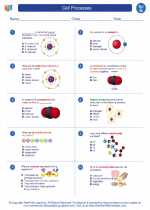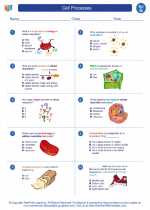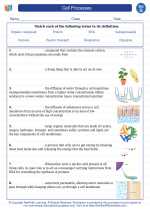Symbiotic Relationships
Symbiotic relationships are close and long-term interactions between different species. These relationships can be mutualistic, commensal, or parasitic.
Mutualism
In mutualistic relationships, both species benefit from the interaction. For example, bees and flowers have a mutualistic relationship - bees get nectar and pollen from the flowers, while the flowers are pollinated by the bees.
Commensalism
In commensal relationships, one species benefits while the other is neither helped nor harmed. An example of commensalism is the relationship between barnacles and whales - barnacles attach themselves to the whales' skin and benefit from the movement of the whale through the water, while the whale is unaffected.
Parasitism
In parasitic relationships, one species benefits at the expense of the other. Parasites harm their hosts in order to survive. For example, ticks and fleas are parasites that feed on the blood of their hosts, such as dogs or cats.
Study Guide
- Define symbiotic relationships.
- Describe mutualistic relationships and provide an example.
- Explain commensal relationships and give an example.
- Define parasitic relationships and provide an example.
- Discuss the impact of symbiotic relationships on ecosystems.
◂Science Worksheets and Study Guides Seventh Grade. Cell Processes

 Activity Lesson
Activity Lesson
 Worksheet/Answer key
Worksheet/Answer key
 Worksheet/Answer key
Worksheet/Answer key
 Worksheet/Answer key
Worksheet/Answer key
 Worksheet/Answer key
Worksheet/Answer key
 Vocabulary/Answer key
Vocabulary/Answer key
 Vocabulary/Answer key
Vocabulary/Answer key
 Vocabulary/Answer key
Vocabulary/Answer key
 Vocabulary/Answer key
Vocabulary/Answer key
 Vocabulary/Answer key
Vocabulary/Answer key
 Vocabulary/Answer key
Vocabulary/Answer key
 Vocabulary/Answer key
Vocabulary/Answer key
